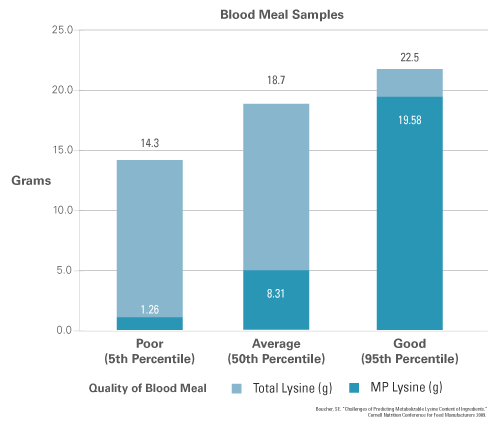Blood Meal Quality: Only the Lab Can Tell
Kemin continually tests customer blood meal samples using the In Vitro Nitrogen Indigestibility Assay (IVNIDA) method developed at Cornell University (Ithaca, NY). IVNIDA is used to determine the variability of the blood meal supply since color or particle size is not an indication of quality. The results are alarming. The figure below shows tests from over 70 blood meal samples. The variability occurs when you look at MP Lysine, which is the amount that is available to the dairy cow. The grey bars indicate samples collected from one feed mill over a period of one month, showing high variation even when sourcing from a single supplier.

Figure 2. Variations of MP Lysine supplied by 1.0 lbs of blood meal






